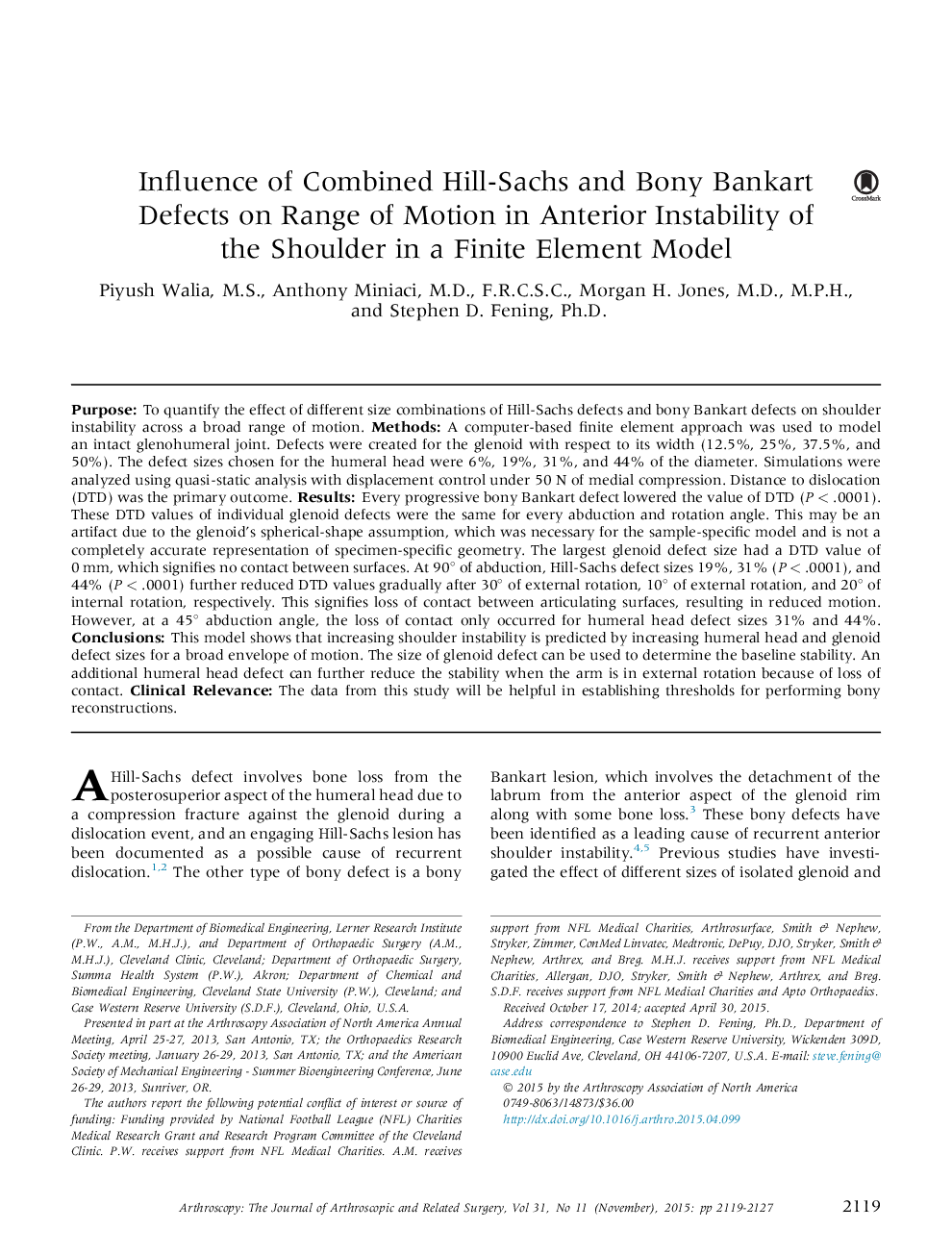| Article ID | Journal | Published Year | Pages | File Type |
|---|---|---|---|---|
| 4042123 | Arthroscopy: The Journal of Arthroscopic & Related Surgery | 2015 | 9 Pages |
PurposeTo quantify the effect of different size combinations of Hill-Sachs defects and bony Bankart defects on shoulder instability across a broad range of motion.MethodsA computer-based finite element approach was used to model an intact glenohumeral joint. Defects were created for the glenoid with respect to its width (12.5%, 25%, 37.5%, and 50%). The defect sizes chosen for the humeral head were 6%, 19%, 31%, and 44% of the diameter. Simulations were analyzed using quasi-static analysis with displacement control under 50 N of medial compression. Distance to dislocation (DTD) was the primary outcome.ResultsEvery progressive bony Bankart defect lowered the value of DTD (P < .0001). These DTD values of individual glenoid defects were the same for every abduction and rotation angle. This may be an artifact due to the glenoid's spherical-shape assumption, which was necessary for the sample-specific model and is not a completely accurate representation of specimen-specific geometry. The largest glenoid defect size had a DTD value of 0 mm, which signifies no contact between surfaces. At 90° of abduction, Hill-Sachs defect sizes 19%, 31% (P < .0001), and 44% (P < .0001) further reduced DTD values gradually after 30° of external rotation, 10° of external rotation, and 20° of internal rotation, respectively. This signifies loss of contact between articulating surfaces, resulting in reduced motion. However, at a 45° abduction angle, the loss of contact only occurred for humeral head defect sizes 31% and 44%.ConclusionsThis model shows that increasing shoulder instability is predicted by increasing humeral head and glenoid defect sizes for a broad envelope of motion. The size of glenoid defect can be used to determine the baseline stability. An additional humeral head defect can further reduce the stability when the arm is in external rotation because of loss of contact.Clinical RelevanceThe data from this study will be helpful in establishing thresholds for performing bony reconstructions.
